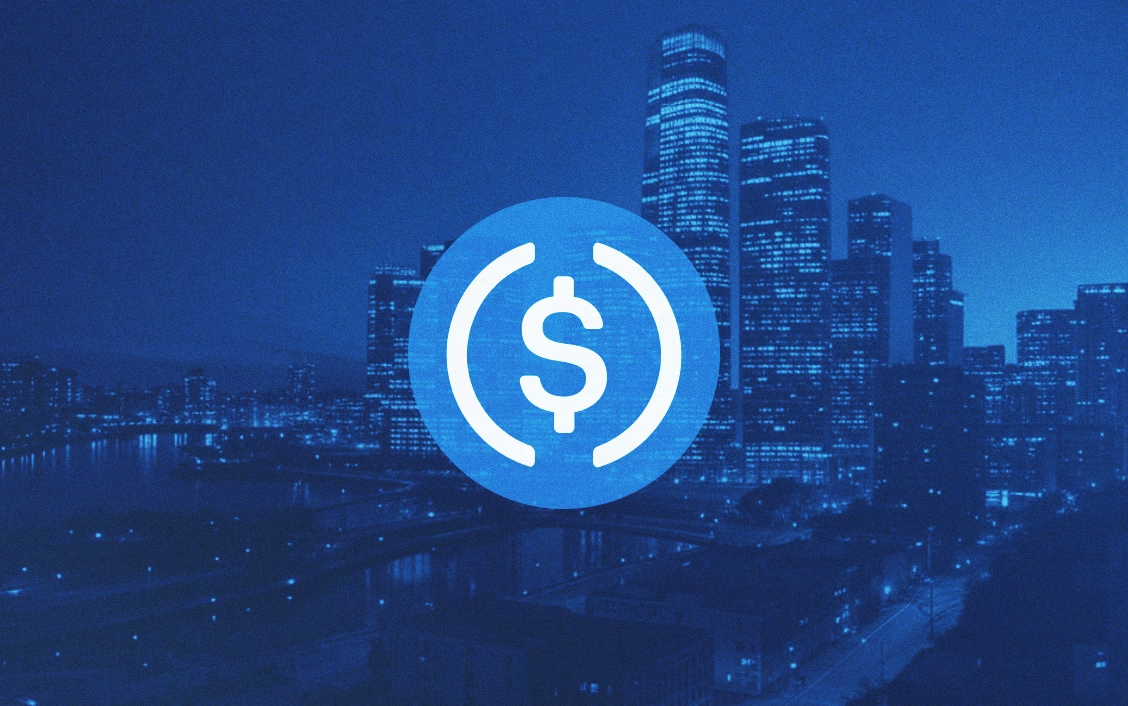USDC (USDC)
USDC, or USD Coin, is a stablecoin that operates on the Ethereum blockchain and is pegged 1:1 to the value of the US dollar. It was launched in 2018 as a product of the Centre Consortium, an open-source technology initiative supported by Circle and Coinbase. USDC is now available on various blockchains, including Algorand, Avalanche, Solana, Stellar, and TRON. Unlike minable cryptocurrencies like Bitcoin, USDC is backed by US dollars held in reserve bank accounts. Each USDC token is backed by one US dollar, and these funds are regularly monitored and audited. USDC is tradable on both centralized and decentralized exchanges such as Binance, Coinbase, and Uniswap.
Tokenization process
The process of converting US dollars into USDC is known as tokenization, which involves several steps. Initially, a user sends USD to the token issuer's bank account. The issuer then uses a USDC smart contract to generate an equivalent amount of USDC, which is sent to the user. The corresponding USD is held in reserve. To redeem USDC for USD, the process is reversed, with the user requesting redemption, the issuer processing the exchange, and the USD being returned to the user's bank account.
History of USDC
USDC was developed by the Centre Consortium in partnership with Circle and Coinbase. It was launched on September 26, 2018, and initially supported by Coinbase. By the end of 2021, the circulation of USDC had grown to over 51 billion. Circle, founded by Jeremy Allaire and Sean Neville in 2013, has played a key role in USDC's development. In April 2020, Coinbase invested $1.1 million in USDC stablecoins into the pools of popular DeFi applications like Uniswap. In November 2020, Circle partnered with Airtm and the Venezuelan government to deliver aid using USDC.
Use cases of USDC
USDC serves various purposes due to its price stability:

| Ticker | USDC |
| Category | Stablecoins |
| Website | https://www.circle.com/en/usdc |
| @circle | |
| Contract Addresses | |
|---|---|
| ethereum | 0xa0...48 Copied! Copied! |
| zksync | 0x1d...d4 Copied! Copied! |
| optimistic-ethereum | 0x0b...85 Copied! Copied! |
| polkadot | 1337 |
| tron | TE...z8 Copied! Copied! |
| near-protocol | 17...a1 Copied! Copied! |
| hedera-hashgraph | 0.0.456858 |
| base | 0x83...13 Copied! Copied! |
| arbitrum-one | 0xaf...31 Copied! Copied! |
| polygon-pos | 0x3c...59 Copied! Copied! |
| aptos | 0xba...3b Copied! Copied! |
| sui | 0xdb...DC Copied! Copied! |
| algorand | 31566704 |
| avalanche | 0xb9...6e Copied! Copied! |
| stellar | US...VN Copied! Copied! |
| solana | EP...1v Copied! Copied! |
| celo | 0xce...8c Copied! Copied! |
Transparency and regulations
USDC adheres to U.S. money transmission laws and employs established auditors. Circle, a registered Money Transmitter, ensures financial transparency. The project is also regulated by the Financial Conduct Authority in the UK, ensuring accountability.
Security
USDC's security is maintained through regular audits by Grant Thornton LLP, which provides monthly attestations on the US dollar reserves backing USDC tokens.
USDC collaborations and developments
USDC x Cosmos
Circle is working with Strangelove Labs and other partners to launch USDC on the Cosmos network, making it accessible via the IBC protocol. This initiative is expected to enhance interchain security and availability.
USDC payments on Visa
In March 2021, Visa announced plans to use USDC to settle transactions on the Ethereum network. This initiative aims to enable clients to directly convert digital assets to fiat currencies on Visa's platform.
Circle assumes control over USDC
On August 21, 2023, Coinbase announced an investment in Circle, granting Circle full control over USDC's governance and operations. This restructuring aims to streamline operations and enhance Circle's accountability as the USDC issuer.
Solana Pay enables USDC payments through Shopify
On August 23, 2023, Solana Pay integrated with Shopify, allowing USDC payments. This integration offers businesses cost-saving benefits and enables loyalty programs through NFT tokens.
USDC launches on new platforms
On September 5, 2023, USDC was introduced on both Optimism and Base, enhancing liquidity and providing stablecoin solutions for various blockchain applications. These integrations aim to expand USDC's role in payments, trading, and digital savings.
